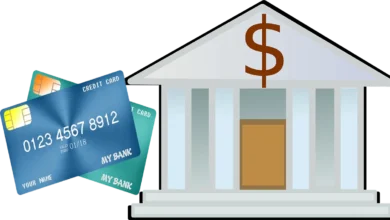How to Get a Lower Mortgage Rate: Your Comprehensive Guide

Securing a lower mortgage rate is more crucial than ever. Whether you’re a first-time homebuyer or looking to refinance an existing mortgage, understanding how to navigate the complexities of mortgage rates can save you thousands over the life of your loan. This blog post will explore essential tips for obtaining a lower mortgage rate, focusing on effective mortgage shopping, credit score improvement, and other strategies that enhance your financial profile.
1. Shopping for Mortgage Rates
One of the most effective ways to secure a lower mortgage rate is by shopping around. Lenders often offer different rates and terms based on their own criteria and risk assessments. It’s advisable to obtain quotes from multiple lenders—at least three to five—so you can compare rates and fees comprehensively. Pay attention not just to the interest rate but also to other costs associated with the loan, such as origination fees and closing costs. Utilizing online comparison tools can streamline this process, making it easier for you to find the best deal available.
2. Improving Your Credit Score
Your credit score plays a significant role in determining your mortgage rate. Generally, the higher your credit score, the lower your interest rate will be. To improve your credit score before applying for a mortgage, start by checking your credit report for errors and disputing any inaccuracies you find. Additionally, focus on paying down existing debts, making timely payments on all bills, and keeping credit card balances low. Even small improvements in your credit score can translate into significant savings over time.
3. Considering Your Loan Term
The term of your loan can significantly impact your interest rate. While 30-year fixed-rate mortgages are popular due to their predictable payments, shorter-term loans (like 15- or 20-year mortgages) often come with lower rates. If you can afford higher monthly payments, consider opting for a shorter loan term; not only will you benefit from a lower interest rate, but you’ll also pay less in interest over the life of the loan.
4. Making a Larger Down Payment
Another effective strategy for securing a lower mortgage rate is making a larger down payment. Most lenders require at least 20% down to avoid private mortgage insurance (PMI), but putting down more than that can improve your standing with lenders and qualify you for better rates. A larger down payment reduces the lender’s risk since they have more equity in the property from the outset.
5. Buying Mortgage Discount Points
Mortgage discount points are essentially prepaid interest that allows you to buy down your interest rate at closing. For every point purchased (equal to 1% of the loan amount), you may reduce your interest rate by approximately 0.25%. While this option requires an upfront investment, it can lead to substantial savings over time if you plan on staying in your home for several years.
6. Locking in Your Mortgage Rate
Once you’ve found an attractive mortgage rate that fits your needs, consider locking it in with your lender. A rate lock guarantees that your quoted interest rate remains unchanged during the specified period (usually between 30 and 60 days) while finalizing paperwork and closing on your home purchase or refinance. This is particularly beneficial in volatile markets where rates may fluctuate dramatically.
7. Refinancing Your Mortgage
If you’re already a homeowner and want to take advantage of lower market rates, refinancing could be an excellent option for you. Refinancing involves replacing your current mortgage with a new one at a lower interest rate, which can reduce monthly payments and overall borrowing costs significantly. Just be sure to weigh refinancing fees against potential savings; there’s no one-size-fits-all solution.
Navigating Adjustable-Rate Mortgages: When to Consider Refinancing to a Fixed-Rate Mortgage
In the ever-evolving landscape of mortgage financing, homeowners may find themselves grappling with the uncertainties of adjustable-rate mortgages (ARMs). As economic conditions shift, interest rates can fluctuate, leaving many borrowers anxious about potential increases in their monthly payments. If you find yourself in this predicament, refinancing your ARM to a fixed-rate mortgage may offer a viable solution.
Understanding Adjustable-Rate Mortgages
Adjustable-rate mortgages are loans with interest rates that can change over time, typically after an initial fixed period. While ARMs often start with lower rates than fixed-rate mortgages, they carry the risk of increasing payments as market conditions shift. The Federal Reserve Board has highlighted that borrowers should pay close attention to the terms of their ARMs, especially concerning interest-rate caps. These caps limit how much your payment can increase at any given adjustment period, providing a level of security against drastic hikes.
However, even with these caps in place, many homeowners prefer the predictability of fixed-rate mortgages. With consistent principal and interest payments, budgeting becomes easier and more reliable.
The Case for Refinancing to a Fixed-Rate Mortgage
If you’re concerned about rising rates associated with your ARM, refinancing to a fixed-rate mortgage presents several advantages:
- Stability and Predictability: By locking in a fixed interest rate, you eliminate the uncertainty tied to fluctuating monthly payments. This stability can be especially beneficial during economic downturns or when inflation is on the rise.
- Potential Cost Savings: If your financial situation has improved since you first took out your loan—whether due to an increase in your credit score or overall lending rates decreasing—you may qualify for a lower interest rate when refinancing. This could translate into significant savings over the life of your loan.
- Flexible Loan Terms: When refinancing, you often have the opportunity to renegotiate the length of your loan. Whether you wish to shorten your loan term for quicker equity building or extend it for lower monthly payments, this flexibility allows you to tailor your mortgage to better suit your current financial goals.
Exploring Alternatives: Changing Your ARM
In addition to refinancing to a fixed-rate mortgage, homeowners might consider changing their existing ARM for another one with different terms. The Federal Reserve Board recommends looking for ARMs with low interest-rate caps, which can mitigate potential payment increases. This option may provide relief without fully committing to a fixed-rate structure if you’re still uncertain about long-term interest trends.
Conclusion
Achieving a lower mortgage rate is entirely possible with careful planning and strategic actions tailored to improve your financial profile as well as thorough research into available options. By shopping around for rates, improving your credit score, considering different loan terms, making larger down payments, buying discount points when appropriate, locking in favorable rates quickly, and exploring refinancing opportunities when beneficial—you can position yourself for significant savings.
As you embark on this journey toward homeownership or refinancing, remember that knowledge is power when it comes to mortgages! For more personalized advice or assistance navigating these options further, don’t hesitate to reach out to financial advisors or mortgage professionals who can guide you through this important process. Best regards, Finance Mate Club





